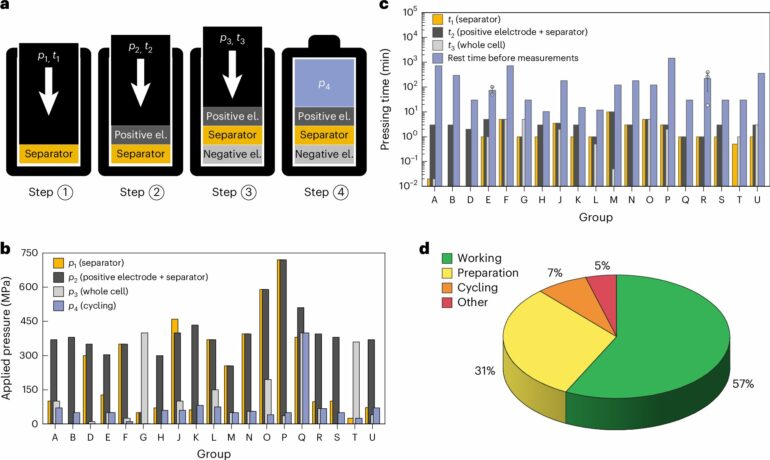To date, there are no uniform standards for research into solid-state batteries, which are also to be used in e-mobility in the long term—even though billions are being invested in this area worldwide. Researchers at the University of Bayreuth have identified the reasons for this and report on them in the journal Nature Energy.
Solid-state or all-solid-state batteries (ASSB) promise a significant increase in energy density compared to conventional lithium-ion batteries. This is why they are considered the future energy storage system for electromobility. However, there is no standardized protocol for the validation of solid-state battery cells in battery research.
When results are published, it is often not clear whether they are even comparable with results from other research groups. Therefore, the starting point for reproducibility and comparability of cell tests must be created in order to be able to reliably evaluate innovations in this technology.
“At least once a week we hear about a new breakthrough in battery cell performance that is set to revolutionize e-mobility or energy storage in general. However, very few of these ‘hyped up’ reports make it into applications outside the lab.
“In many cases, this is because they cannot be reproduced outside the original laboratory,” reports Prof. Dr. Nella M. Vargas-Barbosa, Chair of Electrochemistry at the Bavarian Center for Battery Technology (BayBatt) at the University of Bayreuth. She is the lead author of a recently published article.
In this study, the researchers measured how much the properties of simple test cells varied de facto: 21 research groups with research and industry-recognized expertise in solid-state batteries were provided with the same battery materials and a predefined electrochemical test procedure—but each group used its own method for assembling the cells and individual, non-standardized measurement techniques.
“We now report on the huge differences in the way the battery cells were assembled and how they performed in comparison, including variations in the applied pressure and the composition of the negative electrode,” state the researchers.
“The spread of performance data between the differently built battery cells ended up being immense. While this may be worrying, it is a first step towards a necessary improvement. The study identified some of the cell preparation conditions that can strongly influence battery performance, such as the amount of lithium metal in the negative electrode.
“This study is special because it involves many international groups that are established in the field of solid-state batteries. We all collectively recognize that we need to do more to improve the comparability and reproducibility of the work we report on.”
More information:
Sebastian Puls et al, Benchmarking the reproducibility of all-solid-state battery cell performance, Nature Energy (2024). DOI: 10.1038/s41560-024-01634-3. www.nature.com/articles/s41560-024-01634-3
Provided by
Bayreuth University
Citation:
Benchmarking the reproducibility of all-solid-state lithium battery performance (2024, September 18)



